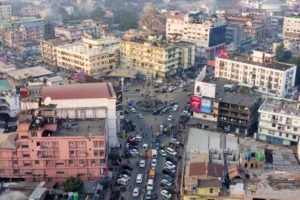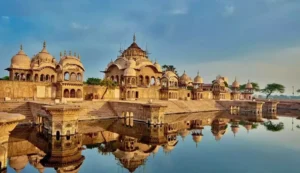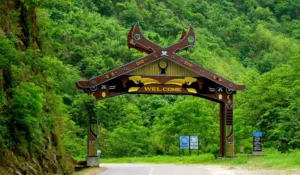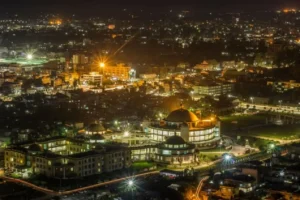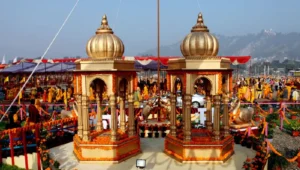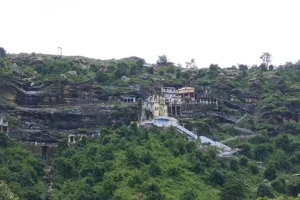
Table of Contents
ToggleShort Notes on Rani Lakshmi Bai
Lakshmi Bai, also written by LaxmiBai, was Jhansi’s rani (queen) and a key figure in the Indian Mutiny of 1857–1858.
Short Story of Rani Lakshmi Bai
Rani Lakshmibai was born in Varanasi on November 19, 1828. She also went by the name Manu and went by the name Manikarnika Tambe. Her father, MoropantTambe, was from modern-day Maharashtra, and her mother, Bhagirathi Sapre (also known as Bhagirathi Bai), was.
Her father was the Commander of War under PeshwaBaji Rao II of the Bithorr District. She received her education at home and picked up reading and writing at a younger age than other kids her age. She studied sports like shooting, equestrian, and fencing in defiance of the social norms that prevailed at the time for women in Indian society.
She married Gangadhar Rao, the Maharaja of Jhansi, in 1842 at just 14. She took the name Laxmibai once she was married. But he went away four months later. Gangadhar Rao perished in 1853. Before he passed away, he had adopted Anand Rao, his cousin’s child, and given him the new name Damodar Rao. Contributions of Rani Lakshmi Bai to the Indian Freedom Struggle
Rani Lakshmi Bai was well known for her extraordinary bravery and contributed significantly to the Freedom Struggle against the British. The key acts she took against the British government are the subject of this section.
Rani Lakshmi Bai Early life
She connected to Holstein’s duke’s thanks to her mother, Sophie FriederikeAuguste, Prinzessin von Anhalt-Zerbst, a distant descendant of Christian August von Anhalt-Zerbst, a minor German prince. At 14, she was chosen to be the spouse of Karl Ulrich, duke of Holstein-Gottorp and future heir to the Russian throne. Karl Ulrich was the grandson of Peter the Grand duke Peter. Catherine married her young cousin in 1745 after arriving in Russia in 1744 under the guise of Grand Duchess Catherine Alekseyevna. The 18 years that followed her were marred by disappointment and humiliation because the marriage was a complete failure. During her 20-year reign, Peter the Great’s daughter, empress Elizabeth, greatly stabilized the monarchy in Russia. Because of her intense devotion to luxury and pleasure and her burning desire to give her court the brightness of a European court, Elizabeth opened the ground for Catherine to succeed her. Still, if Catherine’s husband had even the tiniest amount of normalcy, she never would have become the empress. He was profoundly neurotic, rebellious, maybe impotent, verging on intoxicated, and—most importantly—a devoted supporter of Frederick II of Prussia, the empress Elizabeth’s adversary. On the other hand, Catherine was bright and ambitious. Her brilliance, flexibility of character, and love of Russia helped her earn a lot of support.
Conclusion
Lakshmi Bai, also written by Laxmi Bai, was Jhansi’s rani (queen) and a key figure in the Indian Mutiny of 1857–1858. She was born c. November 19, 1835, in Kashi, India, passed away on June 17, 1858, at Kotah-ki-Serai, close to Gwalior.
Lakshmi Bai had an unusual childhood for a Brahman girl since she was raised in the family of the Peshwa (ruler) Baji Rao II. She wed Gangadhar Rao, the maharaja of Jhansi, but she became widowed without producing a living successor to the kingdom. Before he passed away, the maharaja designated a son as his successor, following accepted Hindu tradition. The adoptive successor was not acknowledged by Lord Dalhousie, the British governor-general of India, who conquered Jhansi in line with the lapse concept. The little kingdom was assigned an East India Company representative to handle administrative concerns.
The queen, who was 22 years old, resisted giving the British Jhansi. Lakshmi Bai was named the regent of Jhansi and ruled on behalf of the minor heir shortly after the 1857 revolt that started in Meerut got underway. She quickly recruited her men, joined the revolt against the British, and took command of the insurgents in the Bundelkhand region. Mutinies in the surrounding areas moved toward Jhansi to support her.
About Author
Piyush Kumar
We, with our blogs, promotes the traveling lifestyle and helps in guiding people about all the aspects of exploring a new place, shaktipeeth, jyortirlinga, foods, temples, etc.



